Álvaro Soto
Cargo: Director
PUBLICACIONES
ABSTRACT
Every year physicians face an increasing demand of image-based diagnosis from patients, a problem that can be addressed with recent artificial intelligence methods. In this context, we survey works in the area of automatic report generation from medical images, with emphasis on methods using deep neural networks, with respect to: (1) Datasets, (2) Architecture Design, (3) Explainability and (4) Evaluation Metrics. Our survey identifies interesting developments, but also remaining challenges. Among them, the current evaluation of generated reports is especially weak, since it mostly relies on traditional Natural Language Processing (NLP) metrics, which do not accurately capture medical correctness.
ABSTRACT:
Current language models are usually trained using a self-supervised scheme, where the main focus is learning representations at the word or sentence level. However, there has been limited progress in generating useful discourse-level representations. In this work, we propose to use ideas from predictive coding theory to augment BERT-style language models with a mechanism that allows them to learn suitable discourse-level representations. As a result, our proposed approach is able to predict future sentences using explicit top-down connections that operate at the intermediate layers of the network. By experimenting with benchmarks designed to evaluate discourse-related knowledge using pre-trained sentence representations, we demonstrate that our approach improves performance in 6 out of 11 tasks by excelling in discourse relationship detection.
ABSTRACT
Current language models are usually trained using a self-supervised scheme, where the main focus is learning representations at the word or sentence level. However, there has been limited progress in generating useful discourse-level representations. In this work, we propose to use ideas from predictive coding theory to augment BERT-style language models with a mechanism that allows them to learn suitable discourse-level representations. As a result, our proposed approach is able to predict future sentences using explicit top-down connections that operate at the intermediate layers of the network. By experimenting with benchmarks designed to evaluate discourse-related knowledge using pre-trained sentence representations, we demonstrate that our approach improves performance in 6 out of 11 tasks by excelling in discourse relationship detection.
ABSTRACT:
Large-scale pre-trained language models have shown remarkable results in diverse NLP applications. Unfortunately, these performance gains have been accompanied by a significant increase in computation time and model size, stressing the need to develop new or complementary strategies to increase the efficiency of these models. In this paper we propose DACT-BERT, a differentiable adaptive computation time strategy for BERT-like models. DACT-BERT adds an adaptive computational mechanism to BERT's regular processing pipeline, which controls the number of Transformer blocks that need to be executed at inference time. By doing this, the model learns to combine the most appropriate intermediate representations for the task at hand. Our experiments demonstrate that our approach, when compared to the baselines, excels on a reduced computational regime and is competitive in other less restrictive ones.
ABSTRACT
The field of natural language understanding has experienced exponential progress in the last few years, with impressive results in several tasks. This success has motivated researchers to study the underlying knowledge encoded by these models. Despite this, attempts to understand their semantic capabilities have not been successful, often leading to non-conclusive, or contradictory conclusions among different works. Via a probing classifier, we extract the underlying knowledge graph of nine of the most influential language models of the last years, including word embeddings, text generators, and context encoders. This probe is based on concept relatedness, grounded on WordNet. Our results reveal that all the models encode this knowledge, but suffer from several inaccuracies. Furthermore, we show that the different architectures and training strategies lead to different model biases. We conduct a systematic evaluation to discover specific factors that explain why some concepts are challenging. We hope our insights will motivate the development of models that capture concepts more precisely.
ABSTRACT
Continuous learning occurs naturally in human beings. However, Deep Learning methods suffer from a problem known as Catastrophic Forgetting (CF) that consists of a model drastically decreasing its performance on previously learned tasks when it is sequentially trained on new tasks. This situation, known as task interference, occurs when a network modifies relevant weight values as it learns a new task. In this work, we propose two main strategies to face the problem of task interference in convolutional neural networks. First, we use a sparse coding technique to adaptively allocate model capacity to different tasks avoiding interference between them. Specifically, we use a strategy based on group sparse regularization to specialize groups of parameters to learn each task. Afterward, by adding binary masks, we can freeze these groups of parameters, using the rest of the network to learn new tasks. Second, we use a meta learning technique to foster knowledge transfer among tasks, encouraging weight reusability instead of overwriting. Specifically, we use an optimization strategy based on episodic training to foster learning weights that are expected to be useful to solve future tasks. Together, these two strategies help us to avoid interference by preserving compatibility with previous and future weight values. Using this approach, we achieve state-of-the-art results on popular benchmarks used to test techniques to avoid CF. In particular, we conduct an ablation study to identify the contribution of each component of the proposed method, demonstrating its ability to avoid retroactive interference with previous tasks and to promote knowledge transfer to future tasks.
ABSTRACT:
Recently, few-shot video classification has received an increasing interest. Current approaches mostly focus on effectively exploiting the temporal dimension in videos to improve learning under low data regimes. However, most works have largely ignored that videos are often accompanied by rich textual descriptions that can also be an essential source of information to handle few-shot recognition cases. In this paper, we propose to leverage these human-provided textual descriptions as privileged information when training a few-shot video classification model. Specifically, we formulate a text-based task conditioner to adapt video features to the few-shot learning task. Furthermore, our model follows a transductive setting to improve the task-adaptation ability of the model by using the support textual descriptions and query instances to update a set of class prototypes. Our model achieves state-of-the-art performance on four challenging benchmarks commonly used to evaluate few-shot video action classification models.

Vicuña Mackenna 4860
Macul, Chile



